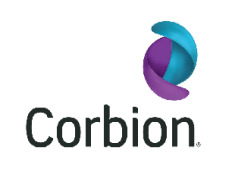News
The promise of algae among alternative proteins
23 Nov 2019Algae has been on the radar as a potential protein source for a few years, but until recently it has lagged behind traditional plant-derived proteins. Now, with rising interest in vegan and vegetarian proteins, algae finally is gaining interest from some major industry players.
Although microalgae has been suggested for a range of uses, including as an alternative to palm oil, for biofuels and to boost protein content in animal feed, there are numerous strains that have yet to be examined for their potential as food proteins. This could be about to change. As many companies are honing their sustainable sourcing strategies and re-examining how to meet growing demand for meat and dairy alternatives, microalgae’s potential once again is in the spotlight.

Most recently, Nestlé announced a partnership with US-headquartered ingredient firm Corbion, which aims to develop the next generation of microalgae for food – and, as the world’s biggest food manufacturer, its move could signal that algae is about to enter the mainstream.
Nestlé has been developing a range of plant-based products for several years, including pea- and soy-based meat alternatives, as well as dairy alternatives from almond, coconut and oats. According to the company, its latest partnership combines its experience in plant-based products with Corbion’s know-how in microalgae and fermentation. And Corbion executives are convinced that Nestlé will be able to fast-track its microalgae ingredients into a range of products for large global markets.
Despite gaining less attention than plant proteins over the past few years, algae ingredients are booming. According to Mintel data, the number of new food and drink products containing algae and seaweed ingredients doubled in Europe from 2015 to 2017. Two-thirds used spirulina, a blue-green seaweed-derived ingredient often used as a natural colorant, but a range of other algae ingredients has emerged, including sea vegetables, seaweed extracts and seaweed-derived seasonings. Such ingredients vary nutritionally, but many are rich in protein, vitamins, minerals, fibre and polyunsaturated fatty acids.
Triton Algae Innovations is a US-based start-up in the sector also producing algae-derived ingredients for meat alternatives. Among its ingredients, it has created an algae-based heme, which it hopes will one day rival the soy-derived heme used in Impossible Burgers to mimic the taste of meat. Meanwhile, Netherlands-based Phycom uses microalgae in meat alternatives for its protein content as well as for its flavouring and binding properties.
When it comes to protein content, microalgae can be a powerhouse for those looking to capitalise on consumer interest in non-animal sources. Chlorella, for instance, contains about twice as much protein as soy and about eight times as much as rice. What is more, the environmental footprint of microalgae is much lower. Nutritious and fast-growing, it requires no irrigation water, pesticides, fertilisers or agricultural land, making it one of the world’s most sustainable raw materials for food.
However, it may be some time before consumers see a broad range of microalgae meat alternatives on supermarket shelves. At the moment, many companies are focused instead on using microalgae to boost the nutritional profile of plant-based meat alternatives and other products, such as pasta and baked goods – but with investment beginning to support its development, the processing technologies needed to make microalgae the primary protein ingredient in more meat-like products may be a step closer.

